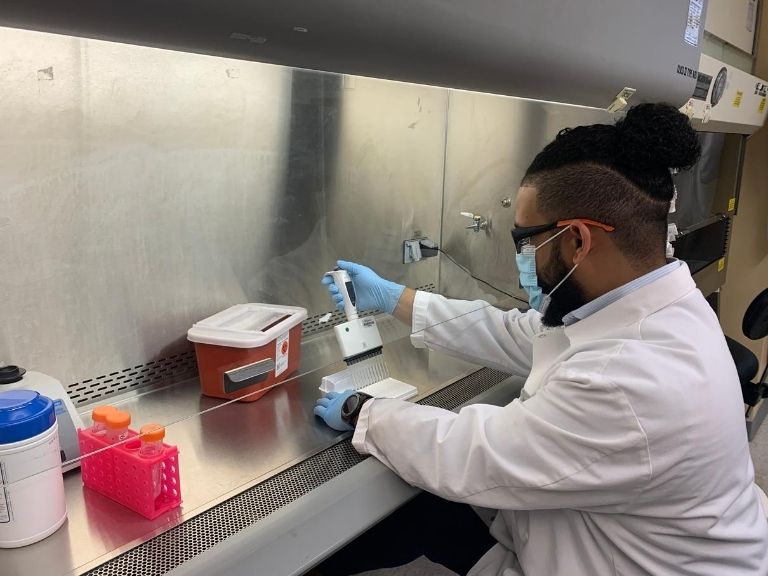
Nate Garcia ’18 began a new position at Pfizer Inc. in the summer of 2019. Less than a year into his role as associate scientist within the company’s Clinical and Diagnostic Assay Development division, he joined the researchers tasked with developing a vaccine for COVID-19.
The deadly infectious disease and, by extension, current pandemic, have been Garcia’s primary focuses since March, when Pfizer, a multinational biopharmaceutical company, announced to the world its plans to begin creating a vaccine for the novel coronavirus.
Garcia, a former biology major, is headquartered at Pfizer’s vaccine research development site in Rockland County, N.Y. He is an assay developer, which calls on him to design experiments that measure the body’s natural immunity response to COVID-19. These experiments precede many phases of clinical trials, which are being administered by tens of thousands of people at Pfizer alone. If the testing is successful and the drug is proven safe and effective, it could be brought to market in October 2020.
“Awesome is the first word that comes to mind when I think about the experience [of working on the Pfizer vaccine],” Garcia said. “It’s surreal. Of all departments that could have hired me at Pfizer, it was assay development, the same team that was tasked with this project. I’m both blessed and lucky to have the opportunity.”
Life in the Lab
Garcia was hired by Pfizer in September 2018, shortly after his graduation from Manhattan College. Now, he is part of a team of researchers working on the vaccine in both New York and Mains, Germany, simultaneously. Their work involves sera samples derived from whole blood of COVID positive patients, while other laboratories deal with the live virus.
For his part, Garcia begins experiments with a bead of sera, which refers to a blood sample that contains neither red or white blood cells. The bead is then coated with the antigen (or SARS-CoV-2, the virus that causes COVID-19), which Garcia and his team examine for a physical response. Specifically, they are looking to see if the blood responds by producing a higher number of antibodies, which protect the human body against a target, or pathogen. The experiments are completed in time points; they might look at the sample before it’s exposed to the antigen, and then again two weeks after exposure, in order to measure the blood’s response.
“The experiments that I run generate data, which is used to inform the parameters of future assay developmental experiments. Once the assay is developed, the data generated is delivered to Pfizer Vaccine Research and Development leadership, who in turn will make decisions on what needs to happen next in regard to clinical trials,” Garcia said.
